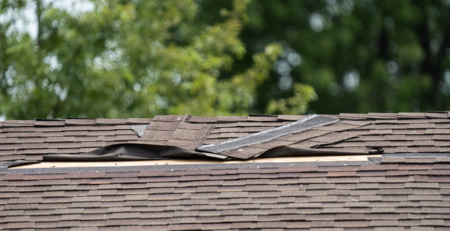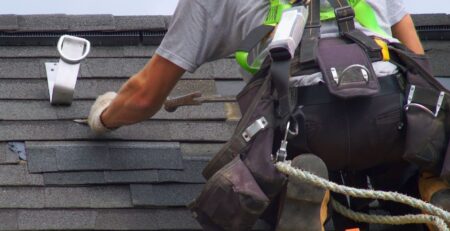Ice and Water Shields: Everything You Need to Know
Ice and water shields are essential to any roofing system, providing an extra layer of protection against the elements.
While often overlooked, these shields are crucial in preventing water infiltration, especially in areas prone to ice dams and heavy rainfall.
During this conversation, we’ll delve into the functions and advantages of ice and water shields, examine their installation procedures, and highlight important considerations to bear in mind.
Furthermore, we’ll explore the necessary maintenance and inspection routines essential for maximizing the longevity and efficacy of these shields. So, whether you’re a homeowner or a Toledo roofing professional, get ready to discover everything you need to know about ice and water shields.
Purpose of Ice and Water Shields
Ice and water shields are crucial in protecting roofs from the potential damage caused by ice dams and water infiltration.
In extreme climates, where heavy snowfall and freezing temperatures are expected, ice dams can form on the roof, leading to water seepage and leaks.
This is where ice and water shields come into play. These shields are installed on the roof’s eaves and valleys, creating a waterproof barrier that prevents water from penetrating the underlying layers of the roof.
Crafted to endure severe temperatures and offer additional defense against leaks, ice and water shields play a pivotal role in extreme climates. Their significance cannot be overstressed, as they adeptly thwart water seepage, averting potential roof and interior structural harm.
Installation Process of Ice and Water Shields
To adequately safeguard roofs from ice dams and water infiltration, it is essential to understand the meticulous installation process of ice and water shields. Ice and water shield installation involves several vital steps to ensure effective protection:
- The roof surface must be thoroughly cleaned and free of debris.
- The shield is applied starting from the eaves and extending up the roof slope, overlapping each row by at least 2 inches. It is crucial to properly seal all seams and penetrations, such as vents and chimneys.
- The shield should extend at least 24 inches beyond the interior wall line and be properly secured with nails or fasteners.
Following best practices for installing ice and water shields will provide a durable barrier against ice damming and water infiltration.
Benefits of Using Ice and Water Shields
Using ice and water shields provides many benefits for safeguarding roofs against ice dams and water infiltration.
One of the key benefits is their long-term effectiveness. Ice and water shields are designed to provide a durable and reliable barrier against moisture, ensuring that water and ice do not penetrate the roof structure.
This helps prevent costly roof damage, such as leaks and rot. Moreover, ice and water shields prove to be cost-efficient.
Although the initial installation expenses may surpass those of conventional roofing materials, the enduring advantages significantly outweigh the upfront expenditure.
Ice and water shields not only prevent water infiltration and ice dam formation but also prolong the lifespan of the roof, diminishing the necessity for frequent repairs and replacements.
In essence, incorporating ice and water shields into roofing plans proves to be a prudent decision for homeowners seeking effective and economical roof protection.
Limitations and Considerations for Ice and Water Shields
When considering ice and water shields, it is crucial to be aware of their limitations and consider certain factors. Here are three fundamental limitations to keep in mind when using ice and water shields:
- Not foolproof: While ice and water shields are highly effective in preventing water infiltration, they are not 100% foolproof. Extreme weather conditions or improper installation can still lead to leaks.
- Limited lifespan: Ice and water shields have a limited lifespan, typically around 20 to 30 years. Over time, exposure to sunlight, temperature fluctuations, and other environmental factors can cause the material to deteriorate, reducing its effectiveness.
- Not a substitute for proper roof design: Ice and water shields are designed to provide an additional layer of protection, but they should not be relied upon as the sole defense against water damage. Proper roof design, including adequate drainage and ventilation, is essential for long-term protection.
Understanding these limitations will help you make informed decisions regarding the use and effectiveness of ice and water shields for your roofing needs.
Maintenance and Inspection of Ice and Water Shields
Regular maintenance and thorough inspection of ice and water shields are crucial for ensuring their continued effectiveness in protecting your roof from water damage.
By implementing proper maintenance techniques, you can extend the lifespan of these shields and prevent potential issues.
One common issue to watch out for is the accumulation of debris on the shield’s surface, which can impede water flow and compromise its performance.
Regularly clearing away leaves, branches, and other debris will help maintain the shield’s functionality. Additionally, inspecting the shield for any signs of damage, such as tears or cracks, is essential.
Addressing these issues promptly and making necessary repairs will ensure that the shield remains intact and can prevent water infiltration. By following these maintenance and inspection practices, you can maximize the effectiveness and longevity of your ice and water shields.









